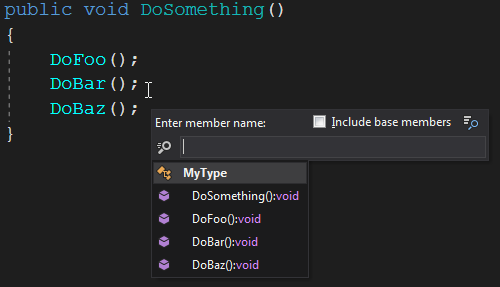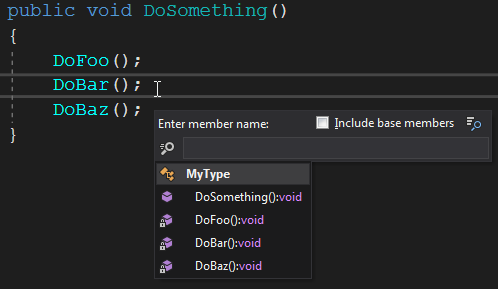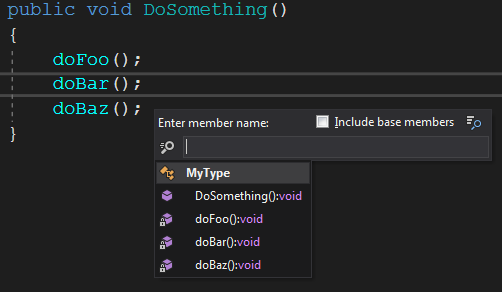
Ever thought about why the default C# convention differentiates between private and public fields: privates being _camelCasedand publics being PascalCased?
Ever wondered why that same default convention doesn’t differentiate between private and public methods?
My convention, like the Java convention, is to make that differentiation between private and public methods. I quite often have this discussion when I join a new team, so I thought I’d write it up.
I find it useful to camelCase private methods to differentiate them from public methods.
Why would you want to differentiate them? For the same reason you want to differentiate private fields from other things in your type.
The change is subtle but useful. It’s a visual aid to the reader that the method is private.
Consider the following method: it calls three other methods:
public void DoSomething()
{
DoFoo();
DoBar();
DoBaz();
}Which method(s) out of DoFoo() DoBar() and DoBaz() are private?
You can’t tell without going to (or peeking at) the definitions of each of those methods.
Why is it important to know, at a glance, the accessibility of a method?
When you land in a new file, you’ve probably ended up in a public method and have got there from looking at a chain of other methods, probably in other types (via Go To Definition for example).
Scanning through this method to see what other methods it calls should give you a quick overview of what it’s doing (or the behaviour it exposes). If you can see at a glance that it calls mostly private methods, then it gives you more reassurance of the cohesiveness and quality of that type.
If you can see that it calls other public methods, then you need to be aware of the larger exposed area of the type; maybe that type doesn’t conform to the Single Responsibility Principle (granted, it may have multiple public methods that are overloads or named differently as they take different input but ultimately do the same thing).
Something I often do is to look at all the methods of a type. I often do this to gauge the amount that’s exposed from the type (the less, the better, ideally one method).
Below is the visual difference between having the DoXxx methods public and private (the popup is from using using Go to Member in ReSharper)
with the 3 methods as public:

with the 3 methods as private:

The differences are hard to notice. ReSharper has padlocks to signify privates
with the 3 methods as private camelCased:

The most striking visual clue is the different casing.
The visual aid that different casing gives us is more pronounced in situations where there are no icons or other hints on the code; such as in code reviews.
Conclusion #
Different casing gives us a small but useful visual aid to the accessibility of a method. Accessibility is as important as to what the actual method does. We should use a convention to differentiate private methods just as we have a convention to differentiate private fields.
Uncategorised🙏🙏🙏
Since you've made it this far, sharing this article on your favorite social media network would be highly appreciated 💖! For feedback, please 🦋 ping me on Bluesky! 🦋
Leave a comment
Comments are moderated, so there may be a short delays before you see it.
Published